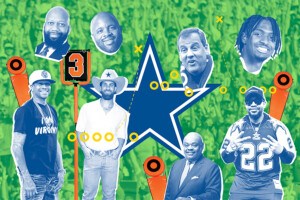Is Robert Covington Poised For A Breakout Season?

Robert Covington has been a reliable shooter for the 76ers over the past two seasons. | Bill Streicher-USA TODAY Sports
As the Philadelphia 76ers prepare to begin training camp later this month, much of the attention has been geared towards Ben Simmons, Joel Embiid, and Dario Saric.
Simmons was the #1 overall pick in the 2016 NBA Draft. Embiid, had it not been for a fracture in his right navicular bone discovered mere days before the 2014 NBA Draft, would have been the top selection in his. With both of those immensely talented prospects set to make their NBA debut’s, the excitement around them is obvious. Fans should be excited to see them perform.
Yet with the excitement over Embiid and Simmons, the long-awaited arrival of Dario Saric, and the “what are they going to do with the frontcourt rotation” debates centered around Jahlil Okafor and Nerlens Noel, one player has been flying completely under the radar is sharpshooting forward Robert Covington.
It’s not all that hard to see why. When you glance at Robert Covington’s stat sheet, he’s easy to overlook. Covington shot just 38.5 percent from the field last year and has shot under 40 percent in each of his two seasons in Philadelphia, the only extended playing time he’s received in his career to date. He’s ranked third on the team in scoring in each of the last two seasons, but that production is frequently dismissed when talking about players on bad teams. Somebody has to score, the saying goes.
Yet when you look at virtually any period over the past two seasons when the Sixers looked like a semi-functional, almost-competent NBA offense and Robert Covington was likely on the court. Over the last two seasons Covington has played in 3,845 minutes and sat on the bench 4,028, a nearly 50-50 split. The team has scored 100.5 points per 100 possessions when he’s been in the game, compared to just 96 when he’s been on the bench*.
You won’t find anybody who the offense has been as reliant on in order to be competent. The offense still scored 103.1 points per 100 possessions when Okafor was on the bench this year. It scored 100.8 over the past two seasons, 3,616 minutes worth, when Noel’s been on the pine. Even Ish Smith, who has frequently been credited as saving the offense, hasn’t been as crucial as Covington, with the offense still sputtering to a horrible, but not quite as horrible, 97.1 points per 100 possessions over the last two seasons when Ish hasn’t been running the show.
Robert Covington's Impact on Teammates
| Player | Pts/36 mins | eFG% |
|---|---|---|
| Jahil Okafor | +2.82 | +4.2% |
| Nerlens Noel | +1.09 | +3.8% |
| Richaun Holmes | +1.38 | +3.3 |
| Ish Smith | +0.38 | +3.3% |
Part of that has been the complete dearth of perimeter shooting the Sixers have been fighting against over the past few seasons. As the team sought out athletic, lanky wings who they hoped they could mold into basketball players over time, perimeter skills became scarce. Remove one of the few legitimate shooters from the lineup and things completely fell apart as defenses have to defend an ever-shrinking portion of the court.
But those numbers don’t just reflect a scarcity of perimeter shooting. It’s not just that Robert Covington is a perimeter shooter, but that he’s a very, very good one at that.
The 38.5 percent field goal percentage isn’t reflective of Covington’s efficiency because nearly 70 percent (67.7%) of his field goal attempts were from beyond the three-point line. When factoring in the extra point made three’s are worth, Covington’s 54.3 percent true shooting percentage was the second most efficient among players who scored at least 10 points per game for the team least year, just barely behind Noel’s 54.4 percent.
And the “somebody has to score” philosophy doesn’t hold up when talking about jump shooters. Covington’s shots were an order of magnitude more difficult because he had nobody to create an open look for him, because he had nobody who could make his defender think about leaving him to provide help onto a shot creator. Jump shooters rely on space, something Covington almost never received an adequate amount of.
When Covington was open, he connected, making 43.2 percent of his three-point attempts where he had 6+ feet of space, per the SportVU data provided by stats.nba.com. That falls right in line with the 44.8 percent he connected on last year when afforded the same amount of space. The problem is, that accounted for just 19.9 percent of his three-point attempts this past season, an almost unheard of rate for a high-volume three-point shooter.
By comparison, Klay Thompson had 6+ feet of space on nearly 30 percent of his attempts, and nobody leaves Klay Thompson open intentionally. J.J. Redick had 6+ feet of space on 34.4 percent of his three-point attempts. Even Steph Curry had 6+ feet of room on 23.9 percent of his attempts from deep, although being able to sink a three from 40′ in videogame fashion makes it easier to get room. A guy like Kent Bazemore, who just inked a 4 year, $70 million contract in large part because of his ability to make an open three and play adequate defense, had 6+ feet of room to operate on 65.6 percent of his three-point attempts, and still barely shot better from deep than Covington did (35.7 percent to 35.3 percent).
Robert Covington When Left Open
| Player | % of 3's with 6+ feet of space | 3PT% with 6+ feet of space |
|---|---|---|
| Robert Covington (2014-15) | 24.0% | 44.8% |
| Robert Covington (2015-16) | 19.9% | 42.7% |
| Wesley Matthews | 43.2% | 41.9% |
| Evan Fournier | 56.2% | 45.2% |
| Kent Bazemore | 65.6% | 34.0% |
| Klay Thompson | 29.4% | 45.2% |
| Gordon Hayward | 40.2% | 40.0% |
| Danny Green | 49.6% | 35.8% |
| Kyle Korver | 29.5% | 36.8% |
Still, Covington connected on 34.6 percent of his shots with a defender within 4′ of him, and even Steph Curry looks human when he has a defender that close (38.6 percent on 264 attempts). In fact, of the 9 players who attempted as many three-point shots with a defender within 4′ of them as Covington did, Covington’s 35.1 percent was bested only by Curry, Klay Thompson, James Harden, and Kevin Durant.
The only thing standing between Robert Covington and a 40 percent three-point shooting season is more open looks. That’s where Ben Simmons comes in.
With Covington taking as many contested three-point attempts as just about anybody in the game, having a guy like Simmons to play next to him is exactly what he needs. Not only because of Simmons’ incredible court vision and ability to get into the paint and force a defense to rotate, but also for his ability to push the ball in transition and get Covington looks before the defense has a chance to set.
It would also help if Covington were allowed to play more at the power forward spot, where he could pull the opponent’s second-best rim protector and defensive rebounder 25′ away from the basket. According to Nylon Calculus, the Sixers were outscored by just 0.2 points per 48 minutes in the 684 minutes Covington was at the power forward spot. Unfortunately, with Embiid, Okafor, Noel, Saric, and Simmons all on the roster, not to mention Jerami Grant and Richaun Holmes, Covington is likely to be defended almost exclusively by small forwards, players who are not depended on for rebounding or weakside help defense nearly as much, and who are more accustomed to defending the three-point line than their taller, less agile brethren.
Still, Covington’s game has to continue to evolve. Putting the ball on the deck is an adventure for him, and his effectiveness drops off precipitously, and he becomes a turnover machine, when he’s forced to try to do so. Getting more open looks on the perimeter should help, as it should simplify his decision making and allow him to be more selective when he does drive to the basket, but simple straight line drives when attacking a closeout should not be nearly as adventurous as they are. He would benefit from using screens better, from working on his pull-up game, and some form of a floater.

Robert Covington struggled when forced to attack off the dribble. (data courtesty stats.nba.com)
But Covington’s subpar handles aren’t the driving force behind why so many of his three-point shots are contested. For wing players who aren’t put in pick-and-roll situations with regularity, the vast majority of their three-point shots are of the no-dribble, catch-and-shoot variety. Sure, Covington would gain a little bit of room if defenders had to worry about his ability to pump-fake and take the ball to the rim, and the number of open looks would certainly go up if he improved his ability to drive to the basket, but the easiest way to get Covington open looks is to have a real, legitimate shot-creator next to him. The number of open three’s he attempts would approach league average if he were playing next to somebody like James Harden, for example. Simmons should be able to help quite a bit in that regard.
Covington’s defense also improved in a big way last year. In fact, not that Defensive Real Plus-Minus is a perfect statistic by any stretch, but Covington ranked third in DRPM among all small forwards last year, behind only Kawhi Leonard and LeBron James. The team performed better with him on the court (108.5 points allowed per 100 possessions) than when he was off (113.8). Opponents shot worse against Covington (44.1 percent) than they did on the season (44.7 percent), despite playing on a very poor defensive team. Covington continues to force turnovers, with a steal rate of nearly 3 percent once again. He improved on the defensive glass. He allowed just 0.75 points per possessions when defending the pick and roll, third best on the team (behind Jerami Grant and JaKarr Sampson), per NBA.com’s Play Type data, and he allowed just 0.57 points per possessions on isolation plays, the best on the team.
Covington didn’t take the jump many expected last season, either in terms of statistics (drop in three-point percentage, increase in turnovers, drop in free-throw attempts) or skill set (ball handling, finishing at the rim). But when you strip away the layers and look at what Covington is, he’s an incredibly valuable piece. A dead-eye shooter who consistently makes shots when open, with a quick release that defenders are scared to drift off of, and the ability to pull up from well beyond the three-point line, along with a developing, versatile defensive game. He’s turning into a real three-and-D threat right before our eyes.
Passers like Ben Simmons and shooters like Robert Covington have a sort of synergistic relationship that is at the heart of today’s pace-and-space NBA game, with shooters opening up the court and creating up driving lanes for guys like Simmons, and a player with Simmons’ ability to force a defense to rotate creating open shots for a shooter like Covington. With that skill set that Simmons provides finally in the fold, Covington could be poised for a surprising season, and would fill a crucial role in a Sixers’ offense looking to make the most out of Simmons’ rare talents.
Derek Bodner covers the 76ers for Philadelphia magazine’s Sixers Post. Follow @DerekBodnerNBA on Twitter.
* all on-court/off-court data used in this articles was obtained from nbawowy.


